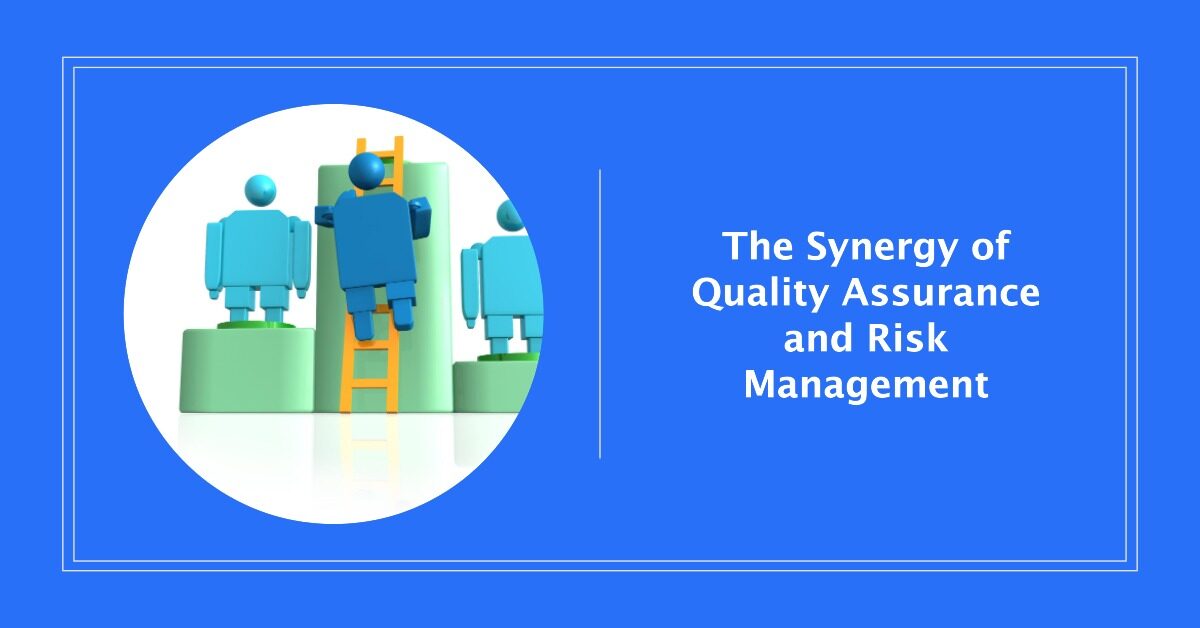Quality assurance, also known as QA for short, is a thorough procedure that guarantees goods and services fulfil requirements and standards. It includes a variety of tasks, such as process optimization, customer satisfaction, and product development and testing. However, risk management entails locating, evaluating, and reducing possible risks that might have an impact on an organization’s goals. Enhancing a business’s overall performance and resilience is a common goal shared by both risk management and quality assurance.
Interoperability between Quality Assurance and Risk Management is a cross-industry strategic imperative. Let’s examine how these two pillars can complement one another to unleash business genius.
1. Proactive Identification of Risks
Proactive operations are the most effective for both Quality Assurance and Risk Management. Organizations can anticipate potential issues before they become significant issues by integrating risk identification mechanisms with QA processes. For example, carrying out comprehensive quality evaluations in the early stages of product development can reveal manufacturing faults or design defects that could jeopardize the product’s performance in the market. Businesses can avoid reputational harm and save resources by taking care of these problems early on.
2. Resilience Through Comprehensive Testing
Thorough testing is one of the main components of quality assurance. An organization can better assure the functionality and dependability of its goods and services by conducting extensive testing. When used in conjunction with risk management, this strengthens resilience. Organizations can reduce the risk of product failures, security breaches, or performance issues by detecting and testing for potential vulnerabilities. This will ultimately protect the organization’s brand and customer trust.
3. Continuous Improvement Culture
Quality assurance is an ongoing process of development rather than a one-time event. This culture of continuous improvement is enhanced when it is paired with a strong framework for risk management. Businesses can remain ahead of the curve and adjust to changing conditions by routinely evaluating and evaluating risks and quality requirements. This flexibility is essential in a setting where consumer tastes, legal requirements, and market trends are always changing.
4. Customer-Centric Approach
Customer satisfaction is the point of convergence for quality assurance and risk management. Assurance that products fulfil or surpass customer expectations is a core objective of quality assurance. Concurrently, one of the main goals of risk management is to identify and reduce risks that might have an impact on customer satisfaction. The combination of these two components results in a customer-centric strategy that delights clients and encourages steadfast loyalty. Through the consistent provision of superior products and services and the mitigation of risks, companies can establish robust and long-lasting connections with their clientele.
5. Regulatory Compliance and Reputation Management
Compliance with regulations is a must in the modern business world. Quality assurance makes sure that procedures and goods meet all applicable laws and standards. Organizations can effectively navigate regulatory challenges when they integrate risk management. Businesses can stay out of legal trouble and keep their good name by recognizing and managing possible compliance risks. A damaged reputation brought on by non-compliance can have dire repercussions, but QA and Risk Management work together to protect against these dangers.
6. Cost Efficiency and Resource Optimization
Quality assurance and risk management work together on cost-effectiveness and resource management as well. Through the identification of potential risks in processes and supply chains, entities can optimize the allocation of their resources. When QA procedures are in line with risk-reduction plans, costly mistakes and rework can be avoided. Because of this synergy, resources are used wisely, which raises overall profitability and cost efficiency.
The roles of Quality Assurance (QA) and Risk Management (RM) in business are pivotal, each playing a distinct yet interconnected role in ensuring the success and sustainability of an organization. Let’s delve into the specific functions and contributions of QA and RM:
a. Product and Service Consistency:
The main goals of quality assurance are to preserve and enhance the consistency and calibre of goods and services. It entails creating standards and following protocols to guarantee that every deliverable satisfies predetermined requirements.
b. Process Improvement:
Quality Assurance (QA) covers the whole production or service delivery process, not just the finished product. To improve productivity and effectiveness, it entails ongoing process monitoring, assessment, and improvement.
c. Customer Satisfaction:
By placing a strong emphasis on adhering to quality standards, quality assurance (QA) helps to meet or surpass customer expectations. Customers who are happy with a product or service are more likely to stick with it and refer others to it, which boosts the company’s success as a whole.
d. Compliance:
Quality Assurance (QA) guarantees that the organization conforms to industry standards, laws, and regulations. Establishing trust with customers, partners, and regulatory bodies is imperative.
Conclusion:
The interplay between Quality Assurance and Risk Management becomes a crucial element for success in the intricate fabric of contemporary business. Organizations can unleash business brilliance through proactive risk identification, thorough testing, continuous improvement culture development, customer-centric approach, regulatory compliance, and resource optimization. This partnership not only protects against possible hazards but also drives companies toward success in a constantly changing environment. The combination of quality assurance and risk management will remain a beacon of hope for companies navigating both present-day and future obstacles. It will show the way to long-term success and excellence.
